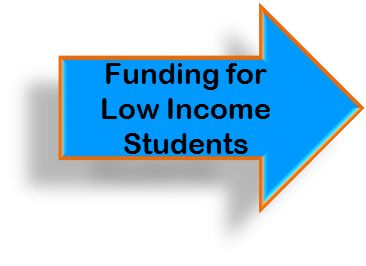While it is easy to assume that since students would get their own devices in a BYOD classroom, the issues of raising funds for the project would be eliminated, the underlying technology infrastructure for implementing a consistent BYOD policy across the school, providing high speed network access to all students, and procuring and installing firewalls to ensure content safety could incur huge expenditures. Many well intentioned BYOD programs fail due to a lack of funds. Following is a brief overview of various funding models available to teachers.
Public-Private Partnerships

- Corporate partnerships – Many schools and companies have formed partnerships to address needs for Internet access, computers, and digital literacy skills.
- Government backed loans –
A government-backed loan is a loan secured by the government, thereby protecting lenders and allowing borrowers to secure lower interest rates.
- Bundled Service Agreements – Technology businesses, such as cable providers or computer service companies, often partner to offer
special collections of services and equipment.
- Seed Funding and Micro-Financing – These are programs that provide small loans, called micro loans, to people in poor areas around the world. These funds can be used to purchase a variety of critical goods, including computers and other technologies. Examples are Tech Goes Home, a Boston-based program, Work Loan Program in Buffalo, New York, and Project Café in Jackson and Owsley County, Kentucky.
-
Support from religious institutions, NGOs
Technology Grants

These include public funding and private grants for hardware, software, and training. Public grants are especially useful for projects that require a large budget, due to the fact that public grants are backed by large legislative bodies which typically increase the resources available for the grant project. However, the increased accountability associated with public grants needs to be considered when applying for government funding. Private grants come from local education foundations which are non-profit organizations whose boards represent local community and education leaders and who are financially accountable to their communities. In addition to a straightforward application process, the limited amount of regulation and documentation of program gains is one main advantage attributed to private grants.
Bonds, Leasing and Universal Service Fees

- Technology bonds – Local government bonds are traditionally used for funding large capital expenditures in the school system. The staff must prepare a large public campaign to secure the award of bonds. Even if a bond is passed by voters, this financing method has limits set on the total amount schools can borrow, usually expressed as a percentage of their assessed property value.
- Leasing – Lease purchase agreements are considered to be one of the most flexible technology funding models because they extend the initial purchase costs over several years. While providing competitive interest rates, they also have the ability to offer flexible payment terms that fit into a school’s budget and timetable.
- Universal Service Fees – emerging countries are recognizing the need to find affordable and sustainable ways to provide widespread access to digital devices and broadband connections, especially in rural and remote areas. ICT-Broadband programs combine the purchase of digital devices, broadband internet access, and local software applications at a reduced rate.
Parent or Individual Financing


